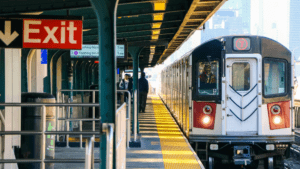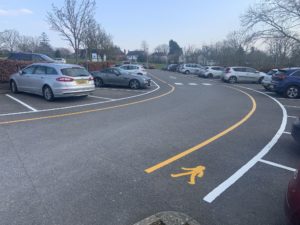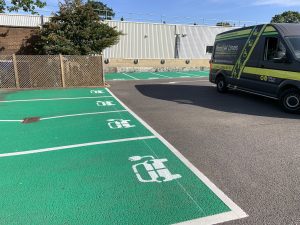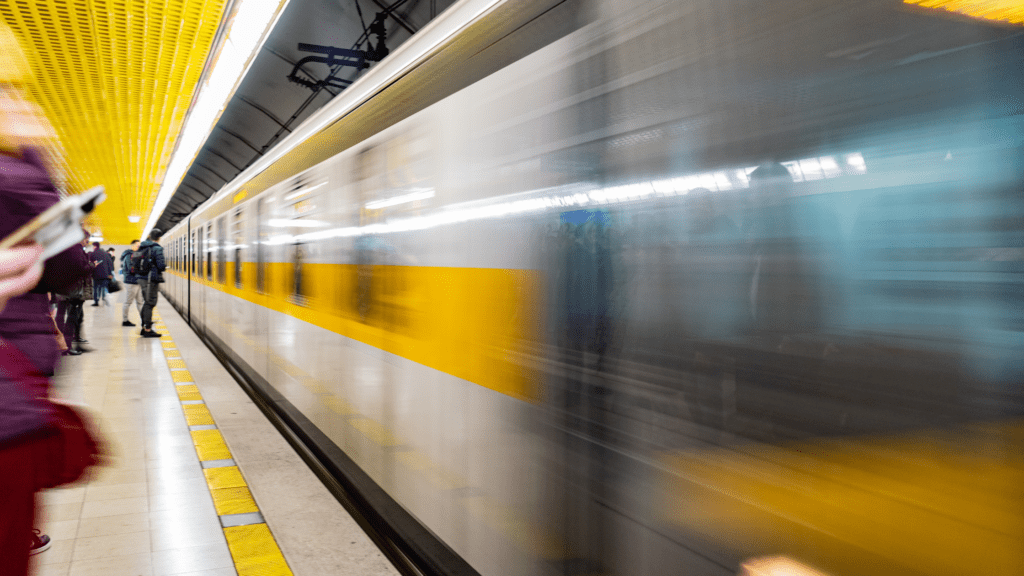With growing environmental worries, cities like London, Birmingham, Cardiff and Bristol have implemented clean air zones and congestion charges. To avoid extra costs, road users are increasingly using public transportation.
This makes it more important than ever for train stations, tube stations, and bus stations to run efficiently and safely.
One often-overlooked way to improve public transport is through the use of road line markings.
The first step to efficient public transport is health and safety.

Ensuring all platform markings are clear and visible at public transport pick-up and drop-off points is essential for the safety of users.
Yellow lines are particularly common in railway and tube stations, their presence acts as a reminder of the potential hazards lurking beneath the platform surface.
These lines act as a physical barrier, discouraging passengers from straying too close to the tracks. The bright yellow hue, easily visible against the often grey background, ensures that even in dimly lit settings, the danger zone is clearly defined.
No entry hatched areas are another way to safeguard the public from potential hazards at public transport stations.

These areas are marked with specific symbols, such as diagonal lines, to prevent unauthorised access to areas that could pose safety risks.
This helps to prevent accidents and ensure that passengers are always in designated safe zones.
Line markings can also be used to create clear and accessible pedestrian walkways at public transport stations, guiding passengers safely to and from their destinations.

This helps to minimise congestion and ensure that pedestrians can navigate the area efficiently and safely.
Clear road markings can also organise public transport station car parks.

They can be used to designate parking spaces for different types of vehicles, including disabled parking bays, electric car charging spaces, motorcycle parking, and areas for securing bicycles.
This helps to ensure that the car park can cater to a wide range of users and functions efficiently.

EV charging bays are another way line marking services can improve public transport efficiency.
To support this shift towards sustainable transportation, public transport stations should consider implementing electric car parking lines and charging facilities.
Line markings can be used to clearly delineate these designated spaces, making it easy for electric vehicle owners to identify and use them.
By implementing effective line markings, public transport authorities can enhance the efficiency, safety, and accessibility of their services, making them more appealing to commuters and contributing to a more sustainable transportation system.

